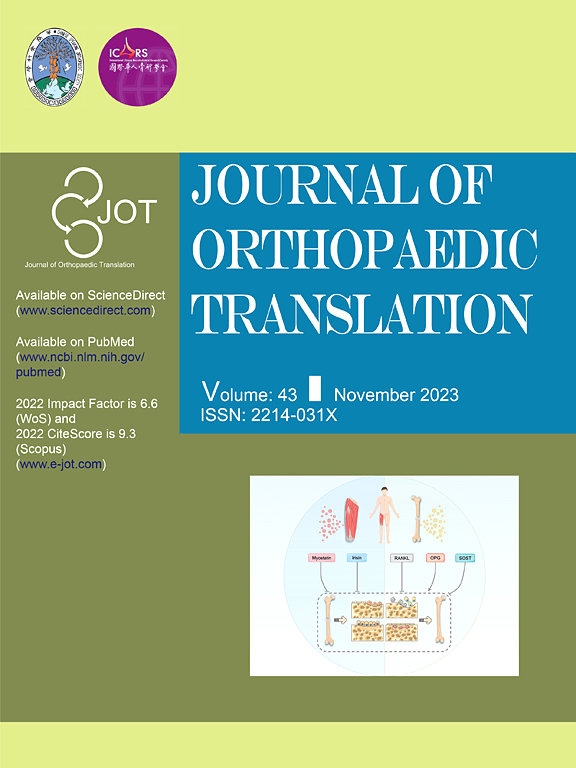Predicting periprosthetic joint Infection: Evaluating supervised machine learning models for clinical application
IF 5.9
1区 医学
Q1 ORTHOPEDICS
引用次数: 0
Abstract
Background and objectives
Periprosthetic joint infection (PJI) is a serious complication that can occur after joint arthroplasty, such as hip or knee replacement surgeries. It involves the invasion of the periprosthetic space by pathogens, leading to severe inflammation and often requiring complex medical intervention. PJI is associated with significant morbidity, increased healthcare costs, and a reduced quality of life for patients. This study aims to evaluate the performance of multiple supervised machine learning models in predicting PJI using clinical and demographic data collected from patients who underwent joint arthroplasty.
Methods
Eight supervised machine learning models—Logistic Regression, Random Forest, XGBoost, Artificial Neural Network (ANN), k-Nearest Neighbors (KNN), AdaBoost, Gaussian Naive Bayes (GNB), and Stochastic Gradient Descent (SGD)—were trained and tested on a dataset of 27,854 patients. Models were evaluated using accuracy, precision, recall, specificity, F1 score, and area under the ROC curve (AUC).
Results
Random Forest and XGBoost showed the best overall performance, with high accuracy and balanced metrics across all evaluation criteria. KNN also performed strongly, particularly in minimizing misclassifications. GNB and SGD yielded weaker results, with higher error rates.
Conclusion
Random Forest, XGBoost, and KNN are the most promising models for clinical implementation in PJI prediction. Their robust performance may support earlier diagnosis and improved patient outcomes in orthopedic care.
Translational potential statement
This study demonstrates that machine learning models—particularly Random Forest and XGBoost—can accurately predict periprosthetic joint infection (PJI) using structured electronic health record data. By integrating these models into preoperative assessment workflows, clinicians may be able to identify high-risk patients earlier, personalize prophylactic strategies, and reduce infection-related morbidity. The implementation of these predictive tools has the potential to enhance clinical decision-making, improve surgical outcomes, and optimize the use of healthcare resources in orthopedic practice.

预测假体周围关节感染:评估临床应用的监督机器学习模型
背景与目的假体周围关节感染(PJI)是关节置换术后常见的严重并发症,如髋关节或膝关节置换术。它涉及病原体侵入假体周围空间,导致严重炎症,通常需要复杂的医疗干预。PJI与显著的发病率、医疗费用增加和患者生活质量降低相关。本研究旨在评估多个监督机器学习模型在使用从接受关节置换术的患者收集的临床和人口统计数据预测PJI方面的性能。方法在27,854例患者的数据集上训练和测试8种监督机器学习模型——logistic回归、随机森林、XGBoost、人工神经网络(ANN)、k近邻(KNN)、AdaBoost、高斯朴素贝叶斯(GNB)和随机梯度下降(SGD)。采用准确性、精密度、召回率、特异性、F1评分和ROC曲线下面积(AUC)对模型进行评价。结果随机森林和XGBoost综合性能最佳,准确率高,各评价指标均衡。KNN也表现得很好,特别是在最小化错误分类方面。GNB和SGD的结果较弱,错误率较高。结论随机森林、XGBoost和KNN是临床应用前景最好的PJI预测模型。他们强大的性能可以支持早期诊断和改善骨科护理患者的结果。该研究表明,机器学习模型,特别是随机森林和xgboost,可以使用结构化的电子健康记录数据准确预测假体周围关节感染(PJI)。通过将这些模型整合到术前评估工作流程中,临床医生可能能够更早地识别高危患者,个性化预防策略,并减少感染相关的发病率。这些预测工具的实施有可能增强临床决策,改善手术结果,并优化骨科实践中医疗资源的使用。
本文章由计算机程序翻译,如有差异,请以英文原文为准。
求助全文
约1分钟内获得全文
求助全文
来源期刊

Journal of Orthopaedic Translation
Medicine-Orthopedics and Sports Medicine
CiteScore
11.80
自引率
13.60%
发文量
91
审稿时长
29 days
期刊介绍:
The Journal of Orthopaedic Translation (JOT) is the official peer-reviewed, open access journal of the Chinese Speaking Orthopaedic Society (CSOS) and the International Chinese Musculoskeletal Research Society (ICMRS). It is published quarterly, in January, April, July and October, by Elsevier.
 求助内容:
求助内容: 应助结果提醒方式:
应助结果提醒方式:


